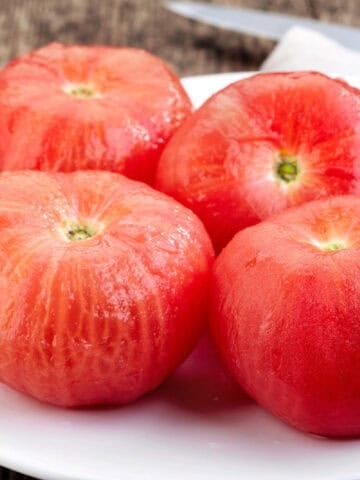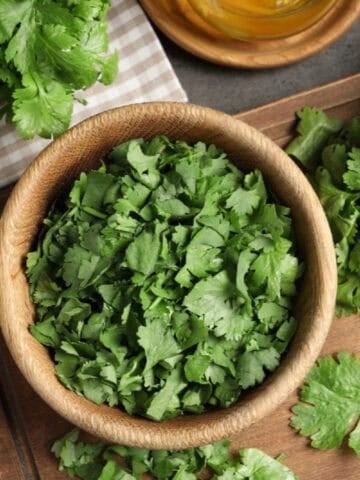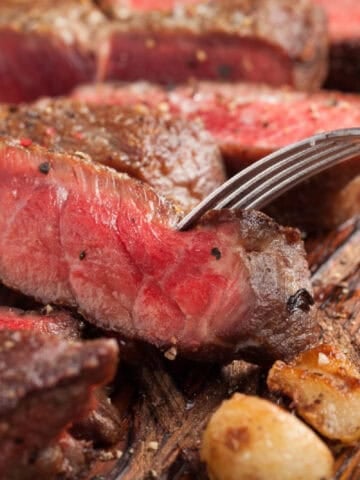Do you know what bamboo shoots taste like? When you hear about bamboo shoots, you might think about them in hot sour soup at the Chinese buffet or takeout. They are a “must-have ingredient” in Buddha’s Delight, hot sour soup, and many other Chinese dishes. They are also one of the most common ingredients in numerous Asian recipes.

Jump To
- What are bamboo shoots?
- What do bamboo shoots taste like
- Factors influencing the taste of bamboo shoots
- Is it safe to eat bamboo?
- How to cook bamboo shoots
- Extra tips when cooking bamboo shoots
- Storing the bamboo shoots
- Where to get bamboo shoots?
- What do bamboo shoots taste like?-Final thoughts
- YOU MAY ALSO LIKE
You will find bamboo shoots in canned, fresh, and dried forms. You might wonder what role this veggie plays in cooking, which is to add texture and flavor.
What are bamboo shoots?
Bamboo shoots are edible young sprouts from bamboo plants' rhizomes (root). The young vertical growths appearing at ground level on bamboo plants are called bamboo shoots. These tender shoots are harvested when they are young and have not matured into woody stems. Bamboo shoots are a common ingredient in Asian countries, particularly in China, Japan, Korea, and Southeast Asia.
Bamboo shoots typically have a conical or cylindrical shape with a pointed tip. The raw bamboo shoots are usually pale yellow or ivory, with tightly layered outer leaves that need to be peeled away before consumption.
What do bamboo shoots taste like
Bamboo shoots have a mild, slightly sweet flavor with subtle earthy undertones. Their taste can be described as delicate and fresh, often likened to a cross between asparagus and water chestnuts. The flavor of bamboo shoots is relatively neutral, making them versatile ingredients that can complement a wide range of dishes without overpowering other flavors.
When properly cooked, bamboo shoots have a tender yet slightly crunchy texture, adding texture and flavor to various Asian dishes such as stir-fries, soups, salads, egg rolls, and dumplings. Sliced, canned bamboo shoots add crunch to salads or rice bowls with soy sauce. Their texture also makes them a great addition to fried rice and noodles. Simply steaming brings out the natural sweetness of this versatile ingredient for a tasty home-cooked meal.
Factors influencing the taste of bamboo shoots
Several key factors influence the taste of edible shoots. The bamboo species plays a major role, as different varieties impart distinctive flavors. The Bambusa vulgaris species commonly used for food tends to have a milder taste than other types. The age and size of the shoot are also significant. Younger bamboo sprouts harvested in their first year of growth often have a sweeter and more tender texture with lighter flavors. Older, whole shoots can be quite fibrous and develop stronger, earthier tastes.

The growing conditions and processing methods further impact the flavor profile. Fresh shoots harvested from nutrient-rich soil in sunny environments tend to be sweeter. Conversely, shady or stressful growing conditions can produce shoots with bolder tastes. The processing method, such as canning, freezing, or drying, affects the final crisp texture and concentrated natural flavors. Cooking techniques also make a difference. For instance, stir-frying offers a different result than simmering in a curry. Steaming also brings out different nuances of the shoots.
Is it safe to eat bamboo?
Bamboo shoots are safe for human consumption when correctly harvested and handled. Thorough cooking, such as boiling or steaming until tender, helps significantly reduce any potential risk. It’s also advisable to use only young bamboo shoots or tender sprouts harvested from a known edible variety of bamboo shoots.
How to cook bamboo shoots
Cooking bamboo shoots is a delightful way to add texture and flavor to various dishes. Here's a simple guide on how to cook bamboo shoots:
Peeling: If using fresh bamboo shoots, peel away the tough outer layers until you reach the tender core. Cut off any tough ends. Lastly, press your thumb underneath the bamboo sprout and push it right out. This is the most straightforward process to peel this veggie. If using canned bamboo shoots, drain and rinse them thoroughly to remove any excess brine or canned flavor.
Boil the bamboo shoots: Fill a pot with enough water to cover the bamboo shoots. If desired, add a pinch of salt. Bring the water to a boil and add the bamboo shoots.
- Boil the bamboo shoots for about 15-30 minutes to remove any bitterness and soften them. The exact cooking time may vary depending on the size and freshness of the shoots. You can check if the inner part of the shoots has become tender by inserting a skewer.
- After boiling, drain the bamboo shoots and rinse them under cold water to stop the cooking process. This step also helps to remove any remaining bitterness. If you're using canned bamboo shoots, they're already pre-cooked, so you can skip the boiling or blanching step and proceed directly to cooking them according to your recipe.
Slice or dice the bamboo shoots: Once the bamboo shoots are boiled and cooled, slice or dice them according to your recipe's instructions. They can be cut into thin strips, cubes, or other desired shapes.
Cooking: Bamboo shoots can be cooked in different ways. They can be stir-fried, sautéed, boiled, braised, or added to soups and stews. If you choose to stir-fry, you can add bamboo shoots along with garlic, ginger, onions, or chili peppers in a heated wok to add aromatics. After the bamboo shoots become heated through and lightly browned, seasonings like soy sauce and oyster sauce pair well with them.
Extra tips when cooking bamboo shoots
Here are some extra tips to help you to make the perfect bamboo shoot:
- Choose fresh bamboo shoots, if available, for the best flavor and texture.
- Boiling the bamboo shoots before cooking helps remove and tenderize bitterness.
- Be mindful not to overcook bamboo shoots, which can become mushy. Aim for a tender yet slightly crisp texture.
- If using canned bamboo shoots, be sure to rinse them thoroughly to remove any canned flavor.
Storing the bamboo shoots
To remove any excess bitterness, it is advisable to soak all the peeled bamboo shoots in cold water for at least 30 minutes after boiling. Before cooking, you can store them in the refrigerator for over a week. Also, you can keep them in water simultaneously, but remember to replace the water once a day.
Cooked bamboo shoots can be stored in an airtight container in the refrigerator for up to 3-4 days. They can also be frozen for longer storage.
Raw Bamboo shoots can be kept in the refrigerator for up to two weeks. If you keep them longer, the sprouts may become bitter. Canned versions can last for almost a year. Boiling and freezing the shoots will keep them fresh for longer than two weeks.
Where to get bamboo shoots?
You can get bamboo shoots from several sources, depending on your location and preferences.
Asian markets or specialty stores are excellent places to find a wide variety of bamboo shoots, both fresh and canned. You can generally buy bamboo shoots at Asian grocery stores in the refrigerated section or from online retailers. Also, in areas where bamboo is grown, you may find fresh bamboo shoots available at farmers' markets during the spring season.
What do bamboo shoots taste like?-Final thoughts
With their amazing nutritional profile and flexible culinary applications, bamboo shoots are worthy of more acknowledgment as a delectable, popular ingredient. Their unique texture and nuanced delicate taste match the scope of global Chinese cuisine commendably. Understanding factors influencing taste allows you to optimize the cooking process. With more awareness and innovative uses, bamboo shoots have great potential to be an excellent choice in the culinary world.
If you are a fan of Asian cuisine, bamboo shoots are your"must try"!






Leave a Reply